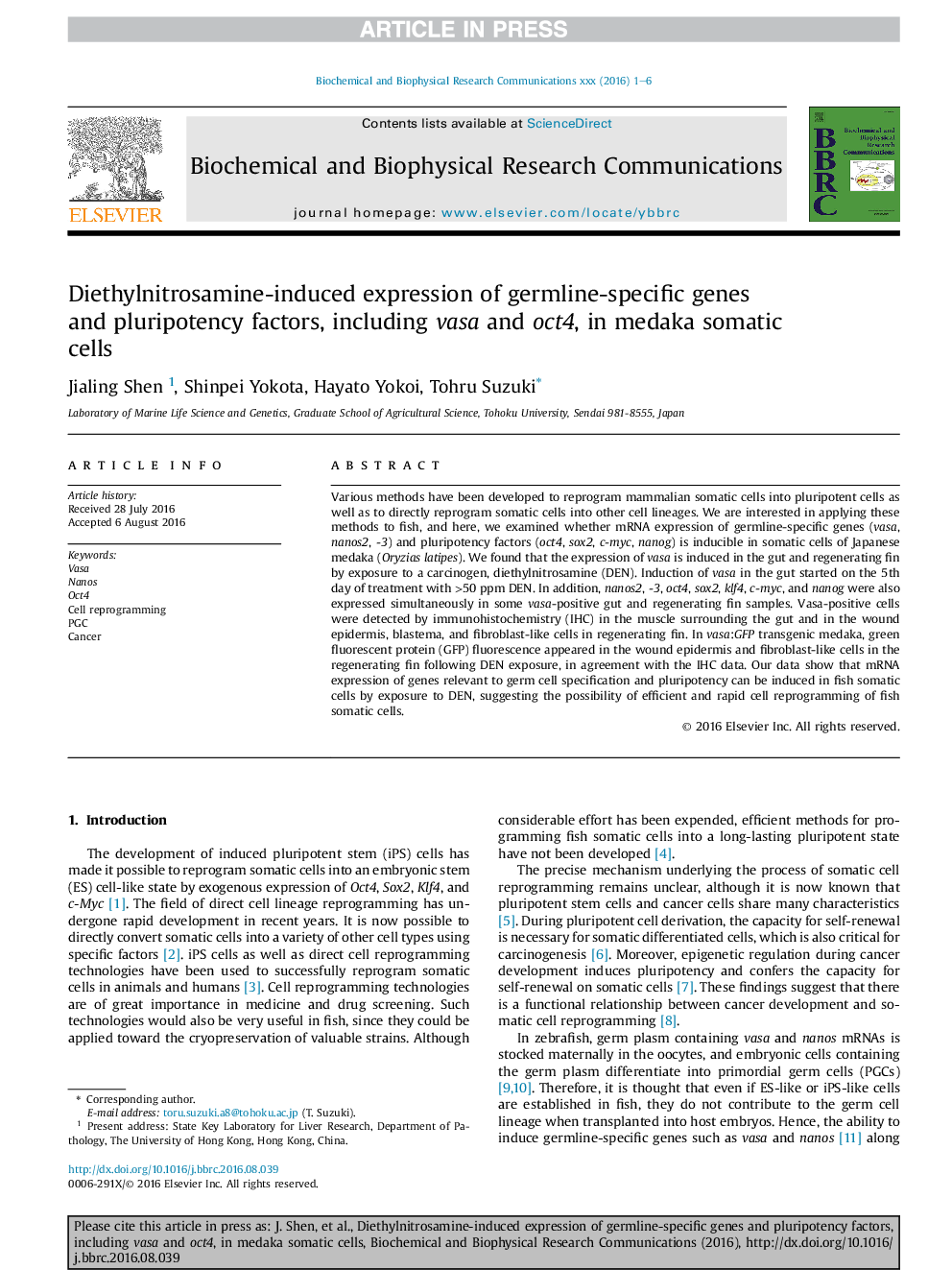| Article ID | Journal | Published Year | Pages | File Type |
|---|---|---|---|---|
| 5506823 | Biochemical and Biophysical Research Communications | 2016 | 6 Pages |
Abstract
Various methods have been developed to reprogram mammalian somatic cells into pluripotent cells as well as to directly reprogram somatic cells into other cell lineages. We are interested in applying these methods to fish, and here, we examined whether mRNA expression of germline-specific genes (vasa, nanos2, -3) and pluripotency factors (oct4, sox2, c-myc, nanog) is inducible in somatic cells of Japanese medaka (Oryzias latipes). We found that the expression of vasa is induced in the gut and regenerating fin by exposure to a carcinogen, diethylnitrosamine (DEN). Induction of vasa in the gut started on the 5th day of treatment with >50Â ppm DEN. In addition, nanos2, -3, oct4, sox2, klf4, c-myc, and nanog were also expressed simultaneously in some vasa-positive gut and regenerating fin samples. Vasa-positive cells were detected by immunohistochemistry (IHC) in the muscle surrounding the gut and in the wound epidermis, blastema, and fibroblast-like cells in regenerating fin. In vasa:GFP transgenic medaka, green fluorescent protein (GFP) fluorescence appeared in the wound epidermis and fibroblast-like cells in the regenerating fin following DEN exposure, in agreement with the IHC data. Our data show that mRNA expression of genes relevant to germ cell specification and pluripotency can be induced in fish somatic cells by exposure to DEN, suggesting the possibility of efficient and rapid cell reprogramming of fish somatic cells.
Related Topics
Life Sciences
Biochemistry, Genetics and Molecular Biology
Biochemistry
Authors
Jialing Shen, Shinpei Yokota, Hayato Yokoi, Tohru Suzuki,
